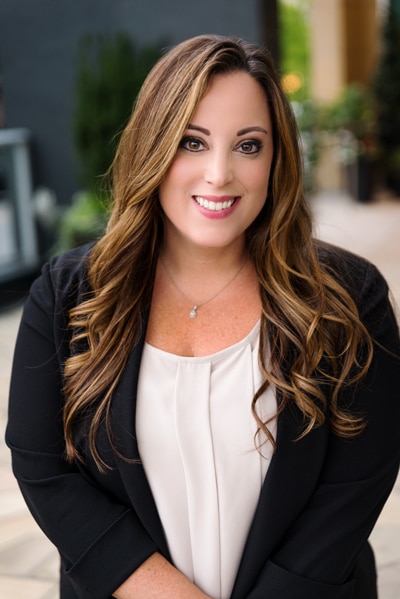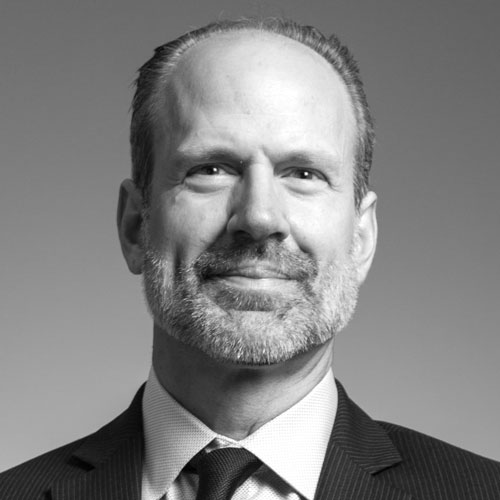The night was winding down as Jessica Harthcock took her position on the gym mat. The seventeen-year-old varsity springboard diver, who cross-trained in gymnastics, had already completed roughly twenty gymnastics maneuvers before setting up to attempt the front double tuck layout twist. “I had done several beforehand, and it was just the last one that went wrong,” Harthcock recalls.
That evening in June 2004 in Evansville, Indiana, perhaps changed the trajectory of Harthcock’s life forever. As Harthcock came down, she landed on the top of her forehead breaking her neck and multiple vertebra, leaving her paralyzed from the chest down. “I instantly lost feeling and movement,” she says. “I actually couldn’t speak for a second.”
Harthcock was rushed to the emergency room, where she was eventually transferred to another hospital for surgery. Afterward, she went to an inpatient rehabilitation facility, where she began an extensive road to recovery. Then, after completing inpatient rehabilitation, she continued outpatient therapy for six hours a day, often six days a week for several years. She moved around the country, living in hotels from Chicago to Louisville, Kentucky, to Louisiana and Indiana. The rehabilitation was a culmination of electrical stimulation, gait training, aquatic therapy, vestibular therapy, and strengthening.

Then, after working for a year and eight months at a grueling pace, Harthcock saw her first sign of recovery—a muscle twitch in her right thigh. “It was almost unnoticeable, but that tiniest of twitches gave me an incredible amount of hope,” Harthcock says.
It took another three years before Harthcock learned to take a step and another six years of rehabilitation before she could walk completely unassisted.
“If you saw me walk today, you’d have no idea anything was wrong,” Harthcock says. “However, I don’t have feeling from my chest down and still face numerous challenges.” Harthcock has a boot on her foot from torn ligaments, and she cannot squat down to the ground. “But the good news is I’m really healthy, live a completely independent lifestyle, and I’m no longer the high-cost, frequent user of the healthcare system, which is great,” she says.
But Harthcock doesn’t attribute her recovery solely to a tireless work ethic. She credits her parents, who would wait on the phone with their insurance company for hours on end, took her to countless therapy sessions, and doctor’s appointments. She also looks toward her husband, Adam, who was one of her trainers who helped her to learn to walk again after her injury. He would also be instrumental in Harthcock’s new entrepreneurial path to help others, which she first envisioned during her own recovery.
In her years of rehabilitation and visiting multiple doctors, Harthcock identified areas in the healthcare system that could be improved upon. As Harthcock explains, when she was in inpatient rehabilitation and then in outpatient phases, she realized that the healthcare system, particularly for patients with complex medical conditions, was often extremely fragmented and confusing, which forced her to have to trust in the healthcare system to provide her with the best treatment. She believed there should be a better way, and in 2013, she and Adam cofounded Utilize Health.
“I had Adam’s full, unwavering support, not just financially, but also as a husband and a partner and as someone who has watched almost my entire recovery process,” says Harthcock, now founder and CEO of Utilize Health. “We work together every single day and have since 2014, when we completed our first round of funding.”
Today, Utilize Health is a complex care management solution, which is sold to health plans to help patients with neurological conditions navigate their care paths. Members in the program include individuals with stroke, brain injury, spinal cord injury/disorder, multiple sclerosis, muscular dystrophy, and cerebral palsy, as well as their neurological subcategories. Harthcock says patients in these categories represent up to 4.5 percent of a typical health plan’s population but account for up to 24 percent of overall medical spend. As a result, Harthcock and her team at Utilize Health focus on all aspects of a patient and include their social determinants of health.
By helping patients with health, social, and environmental resources, it allows the Utilize Health team to drastically lower care costs and improve the health outcomes of the members they serve. To achieve this, Utilize Health has combined a unique set of clinician concierge services, a specialized set of digital tools specifically designed for people with neurological conditions, and a programmatic approach to combining and tailoring these aspects to each patient.
Each patient in the program is paired with a Utilize Health Patient Advocate, who’s a dedicated clinician concierge. Patient Advocates are employees of Utilize Health with at least eight years of experience in neurological rehabilitation who have worked in a multitude of care settings. They address the whole person, taking into account how a member’s primary neurological diagnosis affects their life and approach to other health risks. This year, Utilize Health has gone a step further and deployed a community health worker model. “This puts boots on the ground for our team and allows us to reach the member in new ways,” Harthcock says.
Additionally, Utilize Health has multiple digital tools for members of their program. One of these tools, Utilize Health’s Facility Finder, works similarly to Hotels.com and allows patients fill out a questionnaire, which then matches them with a facility that best suits their medical needs. “We not only look at facilities, but we also look at equipment inside those facilities and the modalities they use to treat a patient,” Harthcock explains. “Then, we’re able to share that with the patient so their care team and the patient can make the best decision in regards to treatment.”
Because of this, Harthcock says Utilize Health puts a major focus on keeping patient data secure. There is also a major emphasis on data analysis for the benefit of members and clients so Utilize Health is “very cognizant of security and HIPAA,” Harthcock says.
Looking ahead, Harthcock says that as a young company, Utilize Health is focused on expanding its footprint and its program. Just as Harthcock understood during her recovery, she wants every patient that comes through Utilize Health to know there is someone in their corner. “How do we navigate a very messy system, how do we be the trusted resource for everyone, and then how do we give every patient the same opportunities to recovery is what we set out to do,” Harthcock says.
And part of that is ensuring the team is as strong as possible. Harthcock praises her phenomenal team, who she refers to as the heartbeat of Utilize Health. “Our patient advocates are the ones who are speaking to our patients, gaining their trust, and helping them day in, day out,” she says.
As they all row in the same direction, there seems to be no limitations to what Utilize Health can provide for patients and ensure they are maximizing the best healthcare available to them.
“How do we get each patient to maximize their potential of recovery? Because quite frankly, we don’t know what maximum is today,” she says. “If Utilize Health can help patients achieve that, then we really fulfilled a bigger mission there all while saving health plans a lot of money in the process.”
Entrepreneur in the Making
Before Jessica Harthcock founded Utilize Health, she founded Good Life and Healthy Mind (GLAHM) at eighteen years old while she was a patient at Shriners Hospitals for Children Chicago. During her treatment there, Harthcock recalls what an inspiring organization it was and how the hospital sponsored several camps for children.
As a result, Harthcock cofounded GLAHM, a beauty and self-esteem building camp for women with neurological disabilities.
“We had incredible sponsors,” Harthcock says. “There’s just a lot of things that we did that really boosted their self-esteem.”
Photo: Johnathan Jones/ThePhotoJones

